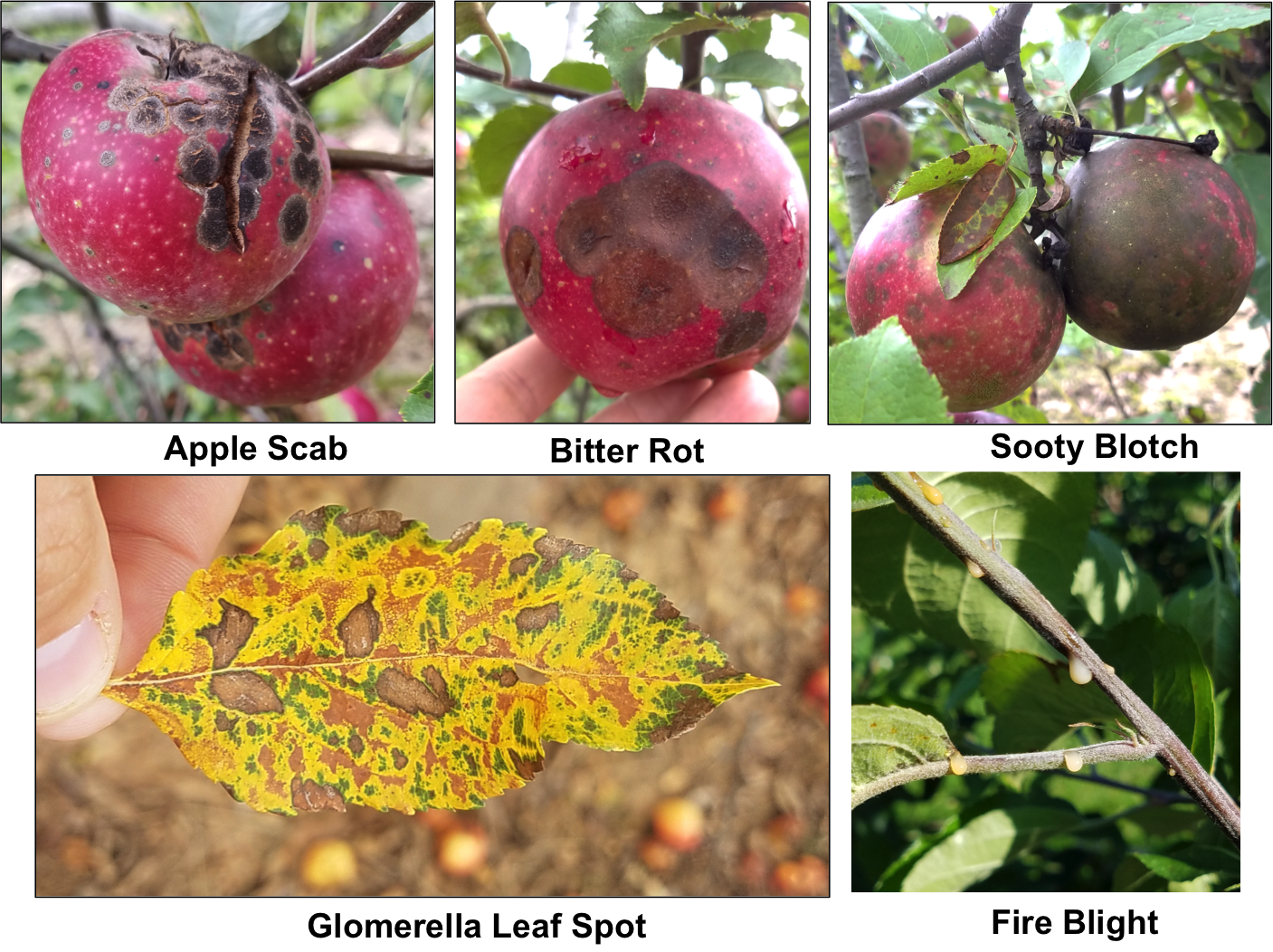Apple Disease Management
go.ncsu.edu/readext?469045
en Español / em Português
El inglés es el idioma de control de esta página. En la medida en que haya algún conflicto entre la traducción al inglés y la traducción, el inglés prevalece.
Al hacer clic en el enlace de traducción se activa un servicio de traducción gratuito para convertir la página al español. Al igual que con cualquier traducción por Internet, la conversión no es sensible al contexto y puede que no traduzca el texto en su significado original. NC State Extension no garantiza la exactitud del texto traducido. Por favor, tenga en cuenta que algunas aplicaciones y/o servicios pueden no funcionar como se espera cuando se traducen.
Português
Inglês é o idioma de controle desta página. Na medida que haja algum conflito entre o texto original em Inglês e a tradução, o Inglês prevalece.
Ao clicar no link de tradução, um serviço gratuito de tradução será ativado para converter a página para o Português. Como em qualquer tradução pela internet, a conversão não é sensivel ao contexto e pode não ocorrer a tradução para o significado orginal. O serviço de Extensão da Carolina do Norte (NC State Extension) não garante a exatidão do texto traduzido. Por favor, observe que algumas funções ou serviços podem não funcionar como esperado após a tradução.
English
English is the controlling language of this page. To the extent there is any conflict between the English text and the translation, English controls.
Clicking on the translation link activates a free translation service to convert the page to Spanish. As with any Internet translation, the conversion is not context-sensitive and may not translate the text to its original meaning. NC State Extension does not guarantee the accuracy of the translated text. Please note that some applications and/or services may not function as expected when translated.
Collapse ▲Due to the warm and humid climate, disease management in the Southeastern United States presents a unique and often difficult challenge for apple producers. While practices for controlling apple diseases must occur throughout the calendar year, the most intensive management period occurs from silver tip and continues until the crop is harvested. For many late-harvest cultivars such as “Pink Lady” this equates to an eight month production season that requires over 25 fungicide and bactericide applications to attain commercially acceptable levels of disease control. Besides pesticide applications, cultural management strategies for disease mitigation are regularly practiced by Southeastern apple growers. Such cultural practices may include urea applications or flail mowing to reduce overwintering disease inoculum, pruning to remove cankers and decrease humidity within the canopy. Below are photos of some of the more common apple diseases observe in North Carolina.



